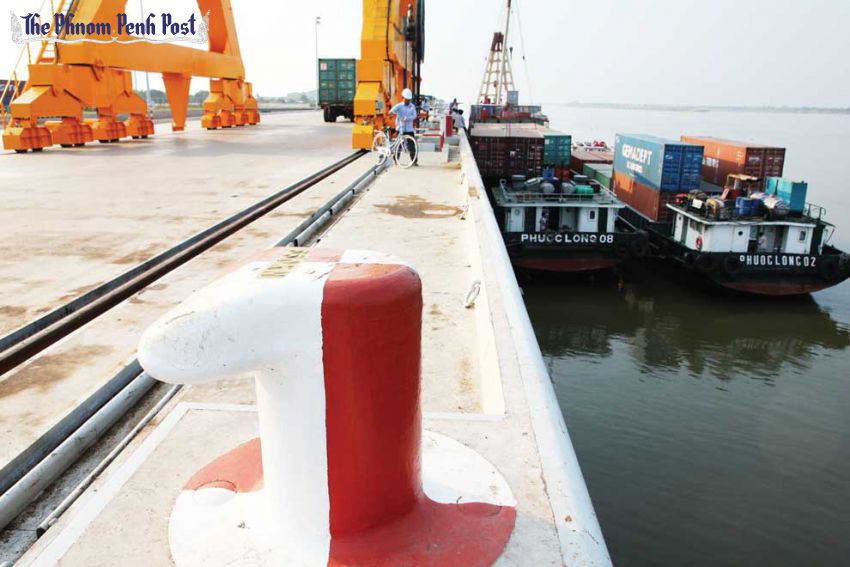Cambodia: Slowdown in port container traffic
The Kingdom’s two main ports reported markedly slower growth in container traffic last year due to a fall in import traffic, although exports of garments and agricultural products continued to rise, according to newly released port data.
Total container throughput at Cambodia’s sole deep-sea port, Sihanoukville Autonomous Port (SAP), amounted to 400,187 20-foot-equivalent units, or TEU, in 2016, an increase of 2.1 percent compared to 2015. Meanwhile, the publicly listed Phnom Penh Autonomous Port (PPAP) recorded a total throughput of 151,781 TEU, a 4.8 percent increase from the previous year.
Both ports saw a significant slowdown in container traffic after nearly five years of double-digit annual growth.
Lou Kim Chhun, director general of SAP, said yesterday that the slower growth of cargo traffic was not reflective of the Cambodian economy as international ports around the world have struggled to maintain volume amid a slowdown in global trade.
He added that the numbers from 2016 showed that Cambodian exports were now taking up a larger percentage of traffic than before, nearly breaking even with import volume.
“In the past, we saw that imports were much bigger than exports,” Kim Chhun said.
“But, now we see that cargo exports have nearly surpassed the import volume, which reflects that local production is growing stronger.”
SAP exported a total of 201,678 TEU last year, a 3 percent year-on-year increase, with imports amounting to 198,509 TEU, 1.3 percent increase.
As for PPAP, exports totalled 76,806 TEU, an increase of 7.5 percent year-on-year, while imports stood at 74,975 TEU last year, a 0.8 percent increase.
According to the data from both ports, Cambodia imports were still centred largely on construction material, new clothes, food and beverage, while exports were dominated by garments and footwear, milled-rice and other agricultural products.
Kung Phoak, co-founder and president of Cambodia Institute for Strategic Studies (CISS), said many factors were combining to slow container traffic growth, noting that Cambodia had better domestic production facilities while land routes still took up a large amount of shipping.
“Manufacturing from Chinese and Japanese companies has increased noticeably in the Kingdom, and this could be why export volumes are larger,” he said. “Whereas imports and exports with neighbouring countries like Thailand and Vietnam will continue to use cheaper land transportation instead of waterways.”
Sin Chanthy, president of Cambodia Freight Forwarders Association (CAMFFA), said that members of the organisation reported the highest growth in freight forwarding services for garments and footwear.
While he admitted that the beginning of this year had been a bit slow, he anticipated that seasonal traffic would pick up again in April.
“We don’t see any negative signs in the overall freight forwarding business in Cambodia, so both exports and imports should continue to increase in 2017,” he said.
PPAP, which is listed on the Cambodian Securities Exchange (CSX), reported in an annual report released yesterday that total revenue reached $16.3 million, resulting in net profit amounting to $4.08 million, a 28 percent increase over 2015.
SAP has not made available revenue figures. Kim Chhun confirmed yesterday that the state-run port operator is still on track to launch its initial public offering on the CSX during the first half of the year.
Source: http://www.phnompenhpost.com/business/slowdown-port-container-traffic


 Thailand
Thailand




